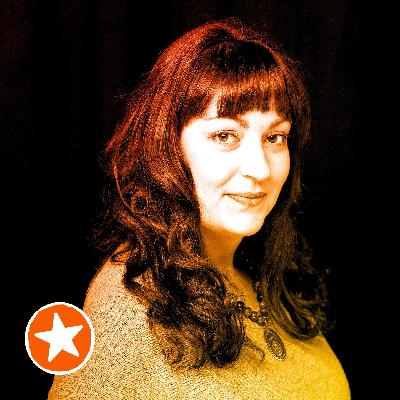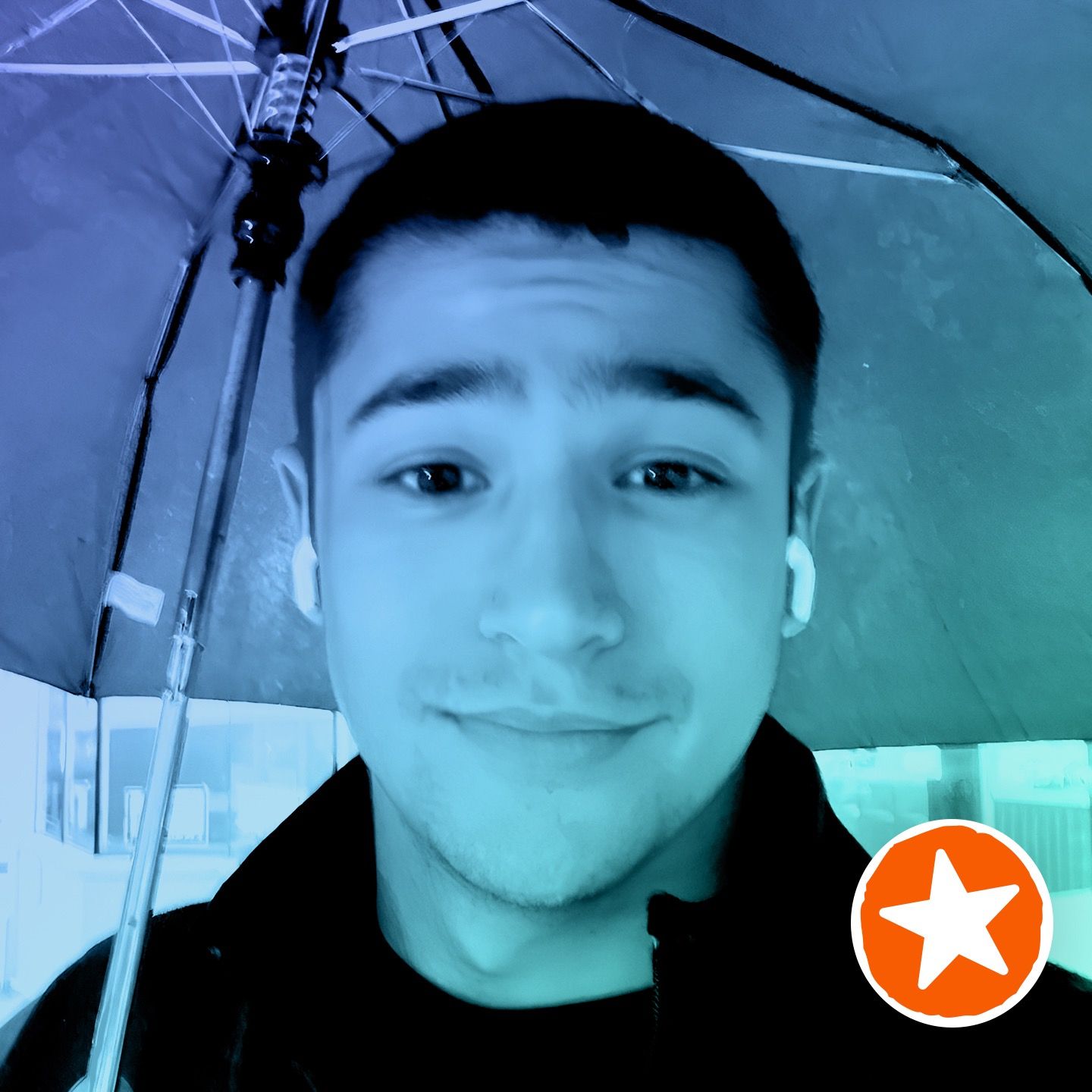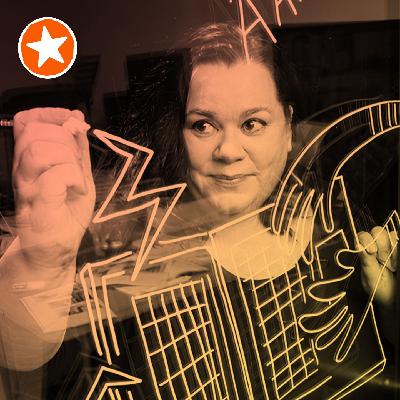Justin Hamacher’s hand-drawn road trip leads to a visualization of Jungian insights – S16/E09
Description
In this conversation, Justin Hamacher delves into how drawing became a powerful tool for learning and recounts his remarkable journey through teaching, punk music, and Jungian analysis.
Sponsored by Concepts
The Concepts Sketchnote Workshop video — a unique, FREE, hands-on workshop video where I show you how I use the Concepts app to create sketchnotes on an iPad Pro with an Apple Pencil.
In this one-hour, eighteen-minute video, I cover:
- The Infinite Canvas as a sketchnoting power feature
- How vectors give you complete control of brushes and sizing as you create sketchnotes and
- How vector elements let you size and repurpose your drawings for ultimate flexibility.
The workshop video includes answers to common questions about Concepts.
Watch the workshop video for FREE at:
https://rohdesign.com/concepts
Be sure to download the Concepts app at concepts.app and follow along with me during the workshop!
Buy me a coffee!
If you enjoy this episode of the Sketchnote Army Podcast, you can buy me a coffee at https://sketchnotearmy.com/buymeacoffee
Running Order
- Intro
- Welcome
- Who is Justin Hamacher
- Origin Story
- Justin's current work
- Sponsor: Concepts
- Tips
- Tools
- Where to find Justin
- Outro
Links
Amazon affiliate links support the Sketchnote Army Podcast.
- Justin on LinkedIn
- Jungian work
- Justin's Upcoming book:The Visual Jung
- Justin's Art Work
- Memories, Dreams, Reflections by C.G.Jung
- Knowledge In a Nutshell by Gary Bobroff
- Ego and Achertype by Edward F. Edinder
- Inner Work by Robert A. Johnson
- Jung and Shamanism in Dialogue
Tools
Amazon affiliate links support the Sketchnote Army Podcast.
Tips
- Draw where you aren't conventionally permitted to do so. Push your boundaries of drawing.
- Have the easiest materials possible that you will use.
- Try to have you and your tools as close to each other as possible to develop that relationship and open those channels of expression and communication with yourself.
Credits
- Producer: Alec Pulianas
- Shownotes and transcripts: Esther Odoro
- Theme music: Jon Schiedermayer
Subscribe to the Sketchnote Army Podcast
You can subscribe to the podcast through iTunes, Google Podcasts, Spotify, Amazon Music, YouTube or your favorite podcast listening source.
Support the Podcast
To support the creation, production, and hosting of the Sketchnote Army Podcast, buy one of Mike Rohde’s bestselling books. Use code ROHDE40 at Peachpit.com for 40% off!
Episode Transcript
Mike Rohde: Hey, everyone, it's Mike Rohde, and I'm here today with Justin Hamacher. Justin, good to have you here.
Justin Hamacher: Hello. Very happy to be here.
MR: So you're an interesting guy. We've been connected for years and years, and you popped back up in my life recently. You've come from the design background a lot like me, but you've done a shift, which I found was really interesting. And it seemed like it could be really fascinating to bring you on the show, not only as a designer and what you're doing now, but you're also a visual thinker, and you've done something interesting in this new direction you've gone by integrating visual thinking into the training that you've taken. So rather than me try to explain it, 'cause I don't know the details, tell us who you are and what you do, and then if you'd like, go right into your origin story, like from a little boy, how did you end up to this moment now?
JH: Oh man. How many hours do we have? Oh, I'll do my best. I'm so happy to be here. This is a wonderful base for the community to learn about individuals and how they use visual thinking.
MR: Yeah.
JH: It's striking to me how relegated it is by the educational system and by our employers and other places, really into a background or kind of novelty identity. For some of us, it's the way our brain works, you know? And it's so hard to have to put things into writing or words or other things without being able to be visual. So I'm really happy this is taking place. Let's see. So, I'll just kind of pop back to when I was little, and then we can work our way forward. Is that okay?
MR: Yeah. Sounds great. Yeah.
JH: Okay. So, one of my very first memories, I swear I'm not gonna talk for hours, I was just joking, is I remember being in preschool and drawing a bird and sitting there and not knowing any other kids. Actually, it was kindergarten because I knew the kids in preschool and, you know, feeling some anxiety, and the room seemed really big and there was a lot of other people around me, I didn't know. I wasn't afraid, but I was a very extroverted kid, you know, but cautious and a little shy.
And I was drawing this bird, and I knew how to draw feathers on a bird. If I look back at the bird now, it's rather comedic, but at the time, for other little kids, they thought that was really cool. And I remember this one little boy coming over and he didn't know me, but he saw me drawing and he said, "Whoa, you can draw feathers on a bird. Oh my gosh." And he knew the other kids 'cause they'd gone to preschool or something. He ran over and grabbed like four kids and brought 'em to the table where I was sitting alone. And they were all like, "Would you show me how to draw feathers on birds? I wanna draw feathers on birds. Oh my gosh."
It felt so good to be expressing myself in a way that was personal. I wasn't holding up the bird feather drawing or something, but to have it resonate with people and to have people wanna learn and share. And then I was able to look at what they were drawing and stuff. It was just a really wonderful start to kindergarten.
So, you know, I knew from being really young, my main identity was an artist. I drew a lot for myself. Scribbled on the interior walls of my closet in my bedroom as a little kid. My mom didn't know about that until we moved when I was around 10, and she was like, "Oh my God, what did you do in here?" There's just, you know, a whole cosmology on the interior. Yeah, it was just scribbles and stuff though.
Yeah, so going through school, it was not easy. I went to parochial schools, so little Catholic grade schools, and they hated drawings. I'm not, you know, universally gonna say they all did, but most my teachers specifically would tell me to stop drawing and to take better notes and to write down what was being said exactly as it was being said. Not to elaborate or have an imagining come off what I was recording.
And that was really stifling because you as a creative guy myself, as a creative guy, other creative people, you have lots of ideas and you wanna kind of suss out the tendrils and see where they go and what they might become. You don't have to follow all of 'em, but that's how you keep your mind alive, you know? So that was really challenging going through all parochial school and pretty much continually being told, "Don't imagine, don't do those things."
I do remember in third grade, there was a big contest for the grade school. The grade school is called Our Lady of Fatima in Seattle, Washington, Magnolia. If anybody out there happens to be from that grade school, what's up. We had a contest for the city of the future. And it was all the students in each grade, eighth grade, seventh grade, sixth grade, fifth grade, you know, down to first grade.
Each student was gonna do a drawing. And then the class would elect one big representative drawing, and then we would make a big drawing and put it on the exterior of our classroom door. Then the teachers would walk around and vote on which class they thought did the coolest one. I was in third grade, and my thing was a city of the future that had, you know, sky cars and floating houses and gardens where people could eat and solar stuff.
It was good surprisingly 'cause most kids like to draw battleships and Star Wars kind of stuff, but for some reason, I laid off that and I drew this. Well, it won for the class, and then it won for the whole school. I remember that feeling so good to see seventh and eighth graders walking by our little third grade classroom and looking at the drawing and being like, "Wow. All right, who did that? Oh, Justin, you did that? What's up kid? Like,
























